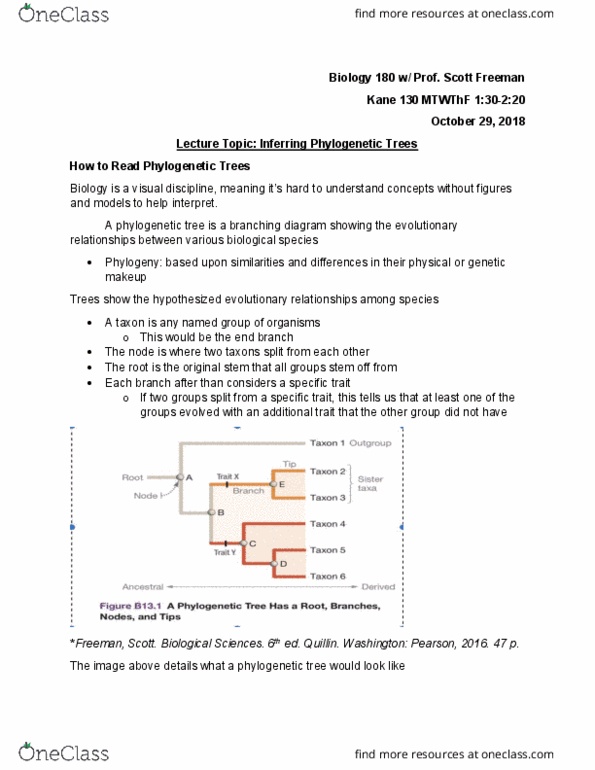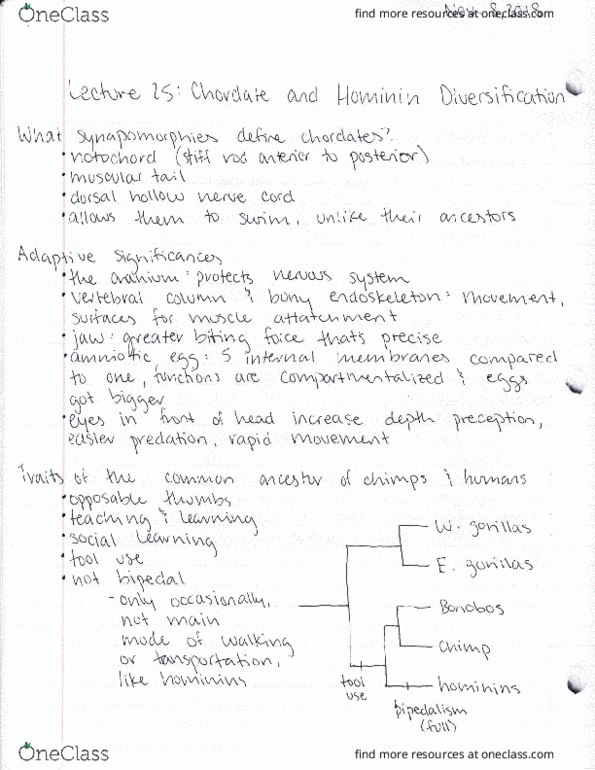BIOL 180 Lecture Notes - Lecture 24: Phylogenetic Tree, Synapomorphy, Polyphyly
BIOL 180 verified notes
24/51View all
Document Summary
Biology is a visual discipline, meaning it"s hard to understand concepts without figures and models to help interpret. A phylogenetic tree is a branching diagram showing the evolutionary relationships between various biological species: phylogeny: based upon similarities and differences in their physical or genetic makeup. If two groups split from a specific trait, this tells us that at least one of the groups evolved with an additional trait that the other group did not have. The image above details what a phylogenetic tree would look like. The root is the most ancestral branch; its where they all came from. Nodes, also called forks, occur where a hypothetical ancestral group splits into two or more descendant groups. Tips, also called terminal nodes, are the tree"s endpoints: has the name of each taxon or group of organisms on it. A monophyletic group consists of an ancestral species and all of its descendants.




